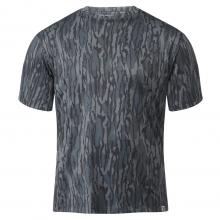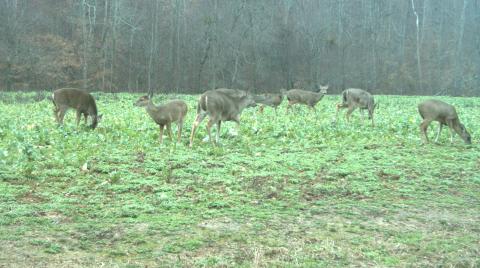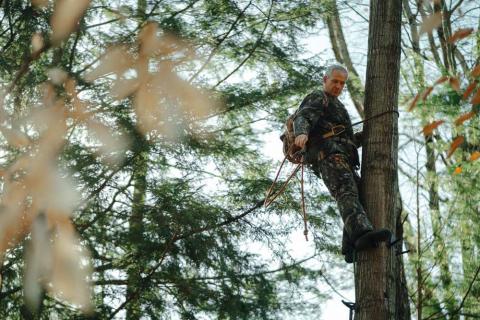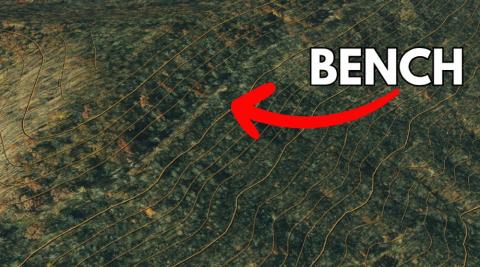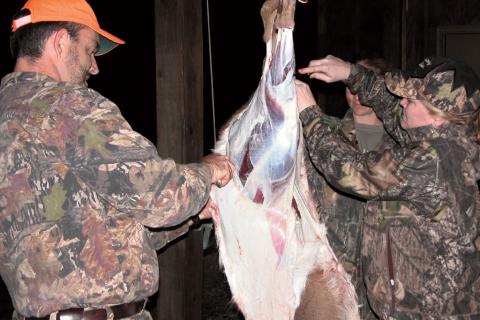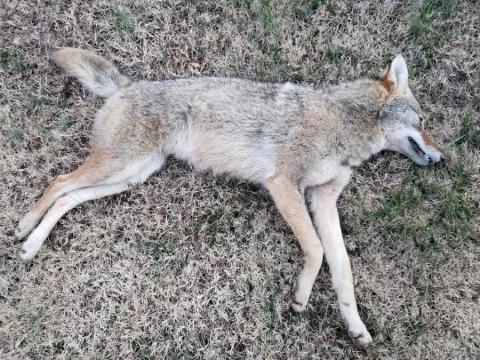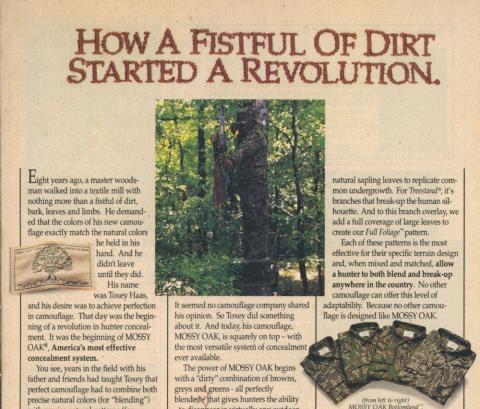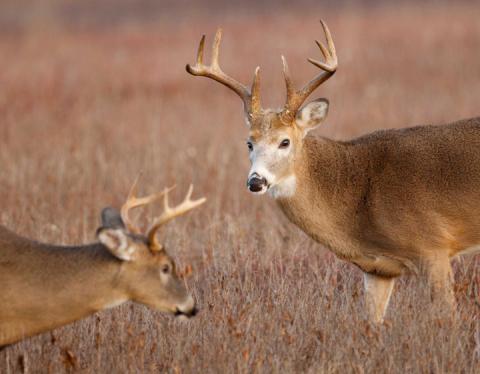Bob Humphrey | Originally published in GameKeepers: Farming for Wildlife Magazine
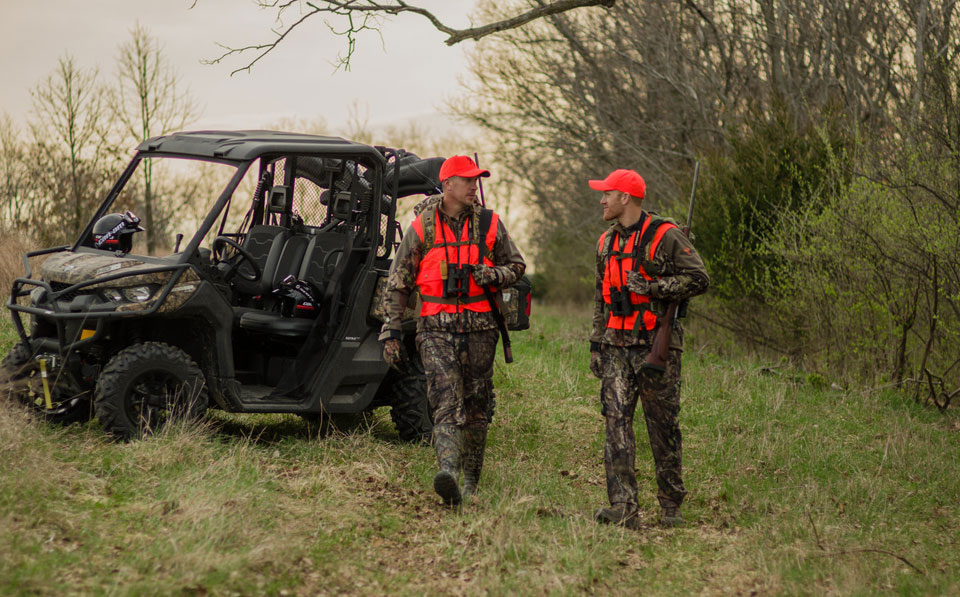
One major objective of managing your property is to provide year-round nutrition for the deer. Another is to create opportunity to harvest those deer. The two are not mutually exclusive. In fact, the whole becomes greater than the sum of its parts if you can integrate both into an effective management-hunting plan.
Hunting Plot Planning and Preparation
The first and most important step in making your ground more huntable is planning. And your most useful tools at the initial stage will be a topo map and an aerial photo. Topography and habitat influence deer movement, and the more you can work with existing conditions, the more effective your plots will be because it’s easier to make deer go where they already want to.
Looking at the big picture helps you put things into perspective. That means looking not only at your property, but that of your neighbors as well. Give the deer something they can’t get next door and they’ll spend more time on your ground.
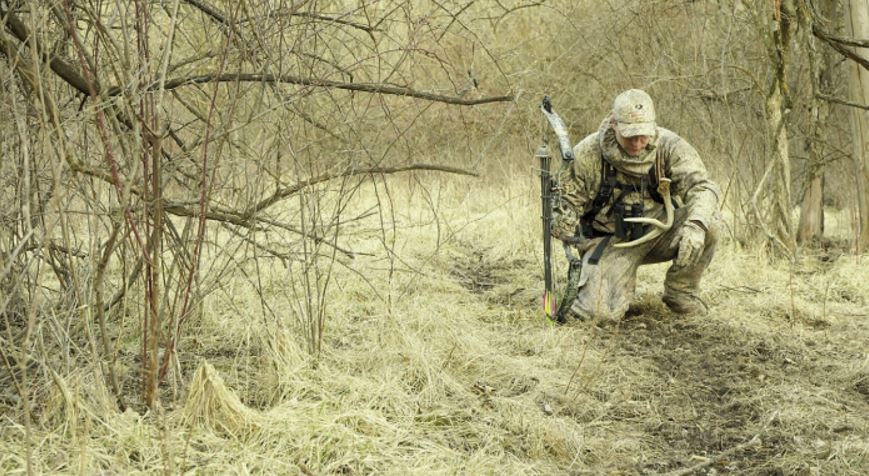
If the adjacent property is cropland, building a food plot nearby might not be your best option (though in some instances it could; more on that later). Instead, you might want to concentrate on bedding cover – leave what you already have or create cover nearby, but not right on the property line. Set it back a ways into your property. Then, with a little selective cutting you can create a travel corridor to intercept the deer moving back and forth. The reverse is true as well. If the adjacent property is bedding cover, build your food plots closer, again leaving a travel corridor in the buffer zone.
Eventually you’re going to have to put some boots on the ground, if you haven’t already. If you did a good job studying maps and photos you should find the most sign where you expected it to be. If not, search it out. Then take advantage of it by putting hunting plots on or near major travel routes and adjacent to traditional rub lines. Again, let the deer go where they already want to and your plots will be more utilized and your hunts more successful.
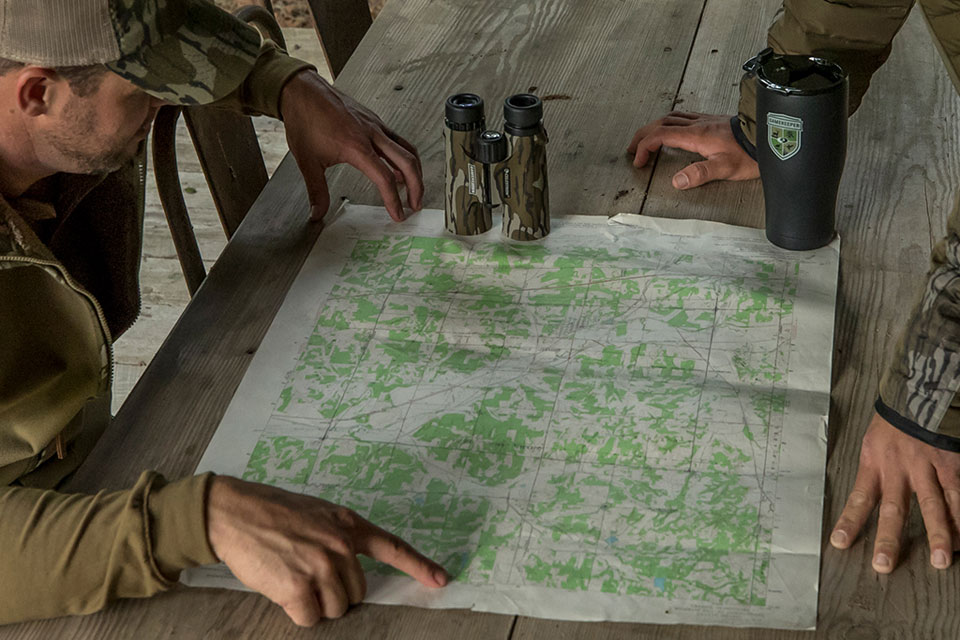
Size and Shape of Your Hunting Plot
Bigger is not always better and that certainly holds true when it comes to “food plot huntability.” Most folks are familiar with the difference between feeding and hunting plots.
The former are generally larger plots designed for agricultural efficiency and year-round nutrition, often planted with warm-season annuals or perennials. Build these to keep your deer healthy, and from wandering too far from home.
Feeding plots can be hunted effectively, particularly earlier in the season, or by gun hunters. But if they’re planted only in high-protein perennials, the deer’s interest may wane as their dietary needs shift to foods higher in energy and carbohydrates. You can also increase the huntability of your large feeding plots by planting several rows/sections of cool season annuals.
If you do, plant the western edge. When entering a large plot, deer often tend to follow the shadows out into the plot, particularly in the early season. I suspect it’s because they feel more comfortable where it’s cooler and they can also use their eyesight more effectively.
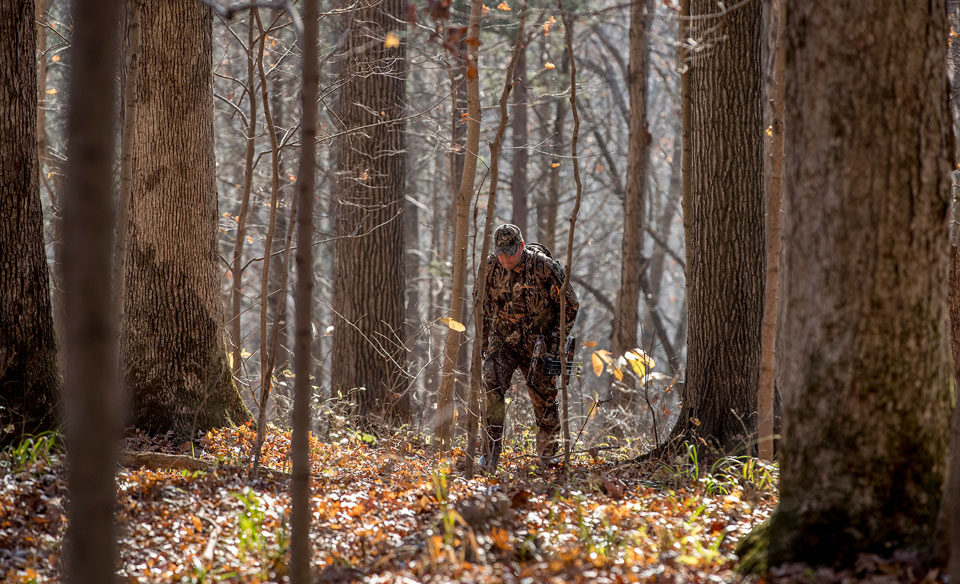
Feeding plots can be hunted, but overall you’ll experience more success in the smaller hunting plots planted in fast-growing cool-season annuals. There are several reasons why smaller is better for hunting plots. During daylight hours deer feel more secure in a smaller opening and tend to come out earlier. Also, smaller plots increase the likelihood of the deer being within your effective range.
Shape is another consideration. Long and narrow is a good configuration, especially for bowhunting as you can increase the area while still keeping most of it effectively within range. Setting up several stands on the same plot for hunting different wind directions is a great idea. Irregular shapes also allow you to plan multiple ambush sites and potentially funnel deer in a particular direction or to a particular location. Once in the open deer tend to follow the long axis of a relatively linear plot.
If your plot is hourglass-shaped, the narrow middle makes for an ideal stand location. They also tend to follow the edges, so an outside corner where natural cover juts out into the plot is another great stand location.
Juxtaposition
Another way to make hunting plots more effective is by positioning them to take advantage of larger feeding plots. As already discussed, deer will use the latter more at night. But if you place smaller hunting plots between feeding plots and bedding cover, the deer will be more inclined to use them as staging areas. Much the same is true if your neighbor’s ground is in crops. The deer may end up over there eventually, but you can intercept them along the way.
Thinking Outside the Plot
Sitting over your hunting plots is not the only way you can use them to kill deer, especially if your goal is a mature buck. You may consider hanging a few stands back away from the plot’s edge. Older bucks may stage in areas 50 to 100 yards back into the cover where they'll wait for dark. And during the rut, they’ll sometimes cruise downwind where they can scent-check for does without venturing into the open. Set your stands on the downwind side of an approach trail. You won’t see as many deer, but you might see the mature bucks in the area.
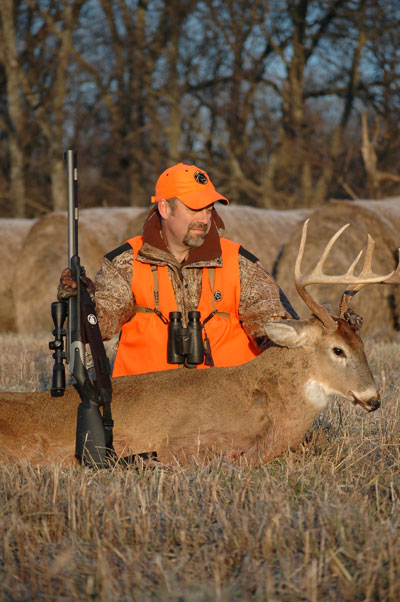
takes minimal time and effort compared to what goes into
building food plots, but will increase the value of all your
efforts exponentially.
Setting up back in the woods is also a better tactic for morning hunts. You can catch deer as they filter back into bedding areas and you won't empty the plot on stand approach, if you planned your advance properly.
Access and Approach
How you get to your stand sites is another important thing to consider when increasing the huntability of your ground. A main road down the middle of the property may be the easiest way to access your plots when building them, but not necessarily when hunting them. You want to minimize your intrusion, particularly scent and sound. Perimeter roads or alternate, downwind access points may be a better option.
Micro-management
You’ve looked at the lay of the land, scouted the sign and built your plots in the optimum locations and configurations, but there’s still more that can be done to increase their huntability. And sometimes it’s the little things that make the biggest difference.
If you’ve ever been on a guided hunt, or hunted a friend’s property, I’ll bet this has happened to you. The long awaited day has finally arrived. You slip into your stand, settle in and start to survey your surroundings, imagining where the deer might come from and where your shots will be. But wait, where are the shooting lanes? Sure, there are a few holes to shoot through, but the deer are going to have to be mighty cooperative about where they stop and stand if you’re going to get a clean shot. Too late do anything about it now.
Trimming doesn’t just apply to shooting lanes. Deer like to stick to thick cover, but they’ll still follow the path of least resistance. I picked up on this long ago when I noticed the deer were using my access trails I cut to my stands. If you want deer to go a certain way, make it easy for them - and vice versa.
Don’t offhandedly discard all that brush generated by your selective cuts, trail building and shooting lane trimming. If you do, you’re wasting a valuable tool. Use that stuff to build impediments to deer movement and funnel them where you want them to go.
Throw and Grow
If a tree falls in the forest and there’s no one there to hear it, will it make a sound? Of course it will. It will also make an opening in the canopy, allowing sunlight to reach the forest floor and providing a prime opportunity to build a throw and-grow style food plot.
Grab a backpack leaf blower (or a rake), some seed and fertilizer and head for the hole. For an area of 400 (20 x 20) square yards, figure on one 50-pound bag of triple-19 fertilizer and three to four pounds of seed. Something like BioLogic Hot Spot is ideal for this situation. It’s a blend of winter peas and buckwheat designed to be fast-germinating with no soil-tilling required.
You simply blow (or rake) the leaves away, then broadcast the fertilizer and seed, either by hand or with a hand-held spreader. Walk over the area a few times to tamp down the soil and pray for rain. Raking the seed into the soil will help to assure seed-to-soil contact and a better germination rate. The whole operation takes between 15 and 30 minutes, depending on walking distance, and will be ready to hunt in less than a month. Jump on it when it’s ready as you’ll only have about a two to three-week window of opportunity while the plants are at their most palatable stage.
Mast Orchards For Your Plot
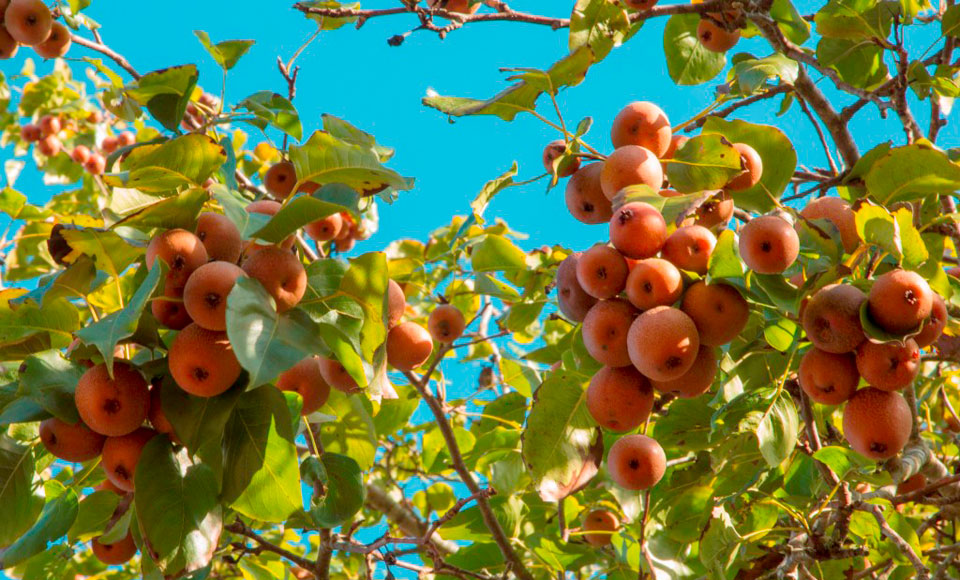
Mast orchards are quite the opposite of throw-and-grow plots, requiring more up-front work. But once established, mast orchards provide many benefits. They can usually be left alone and will continue to attract deer indefinitely. They make an effective alternative if you don’t have green plots, or a great supplement if you do, providing an alternate or additional food source for deer at a time when they and you need it most.
Deer like wheat, peas and brassicas, but they love acorns; and specialty varieties and hybrids like those available from Mossy Oak Nativ Nurseries will begin producing fruit in just a few years. The same is true of fruit trees, and I have yet to find a more powerful deer attractant than ripe persimmons. This point was driven home for me several years ago on an early-season Kansas hunt. We began hunting over large bean fields, but the deer weren’t using them until after dark. Then I switched to a stand several hundred yards back from the nearest bean field, overlooking a large patch of ripe persimmons. The first afternoon I saw countless does and nine different racked bucks, all well before dark.
Conclusion
Start by extensively studying the lay of the land and how your deer use it. Then work intensively around your plots, orchards and stand sites. In both cases keep the big picture in mind so as to better synthesize all your efforts. In some ways it’s easier if you’re starting from scratch because you can customize your layout. Even if you already have established plots there are numerous ways to enhance their huntability and that of the overall property. The aforementioned are just a few ways. Each situation is different and in the end you’re limited only by the potential and the limits of your ambition and imagination.






